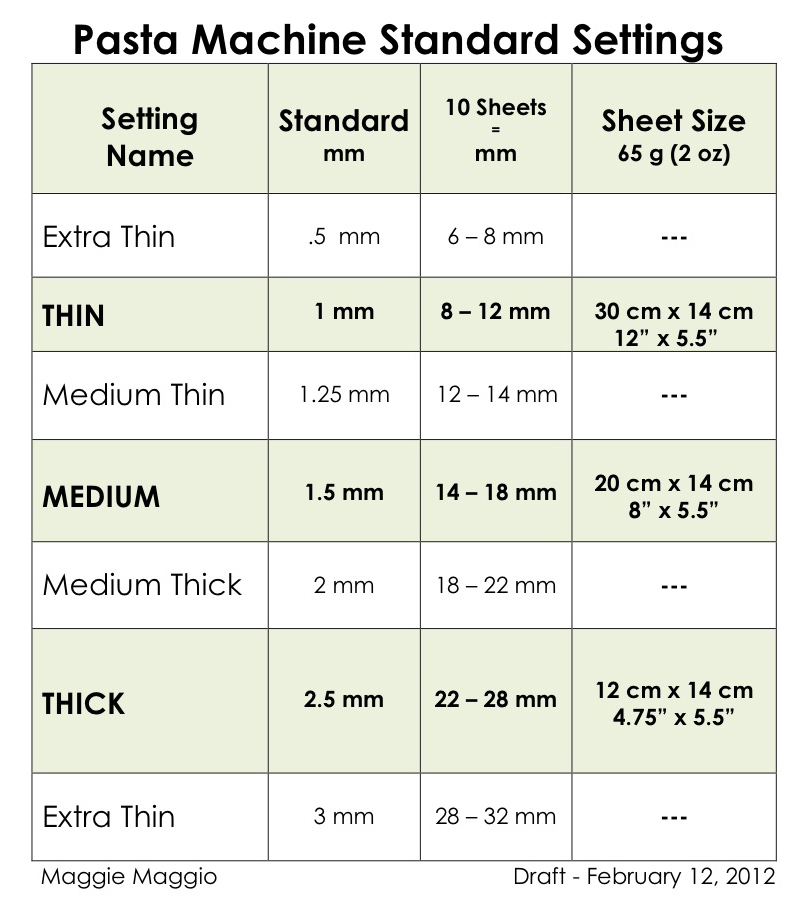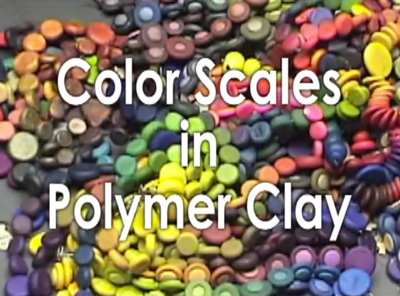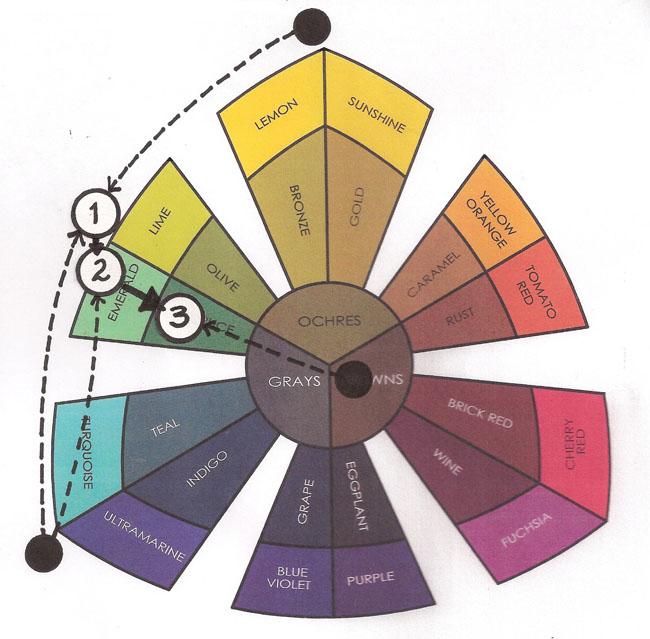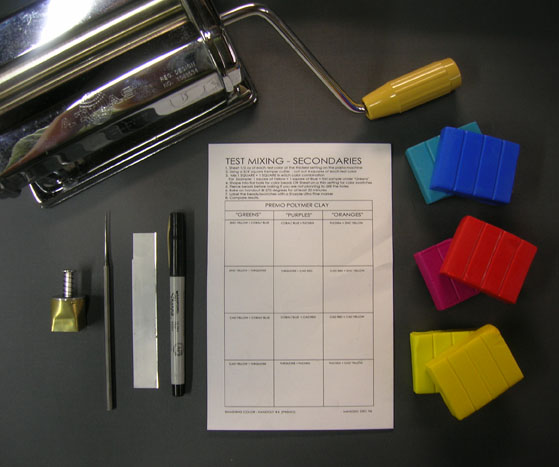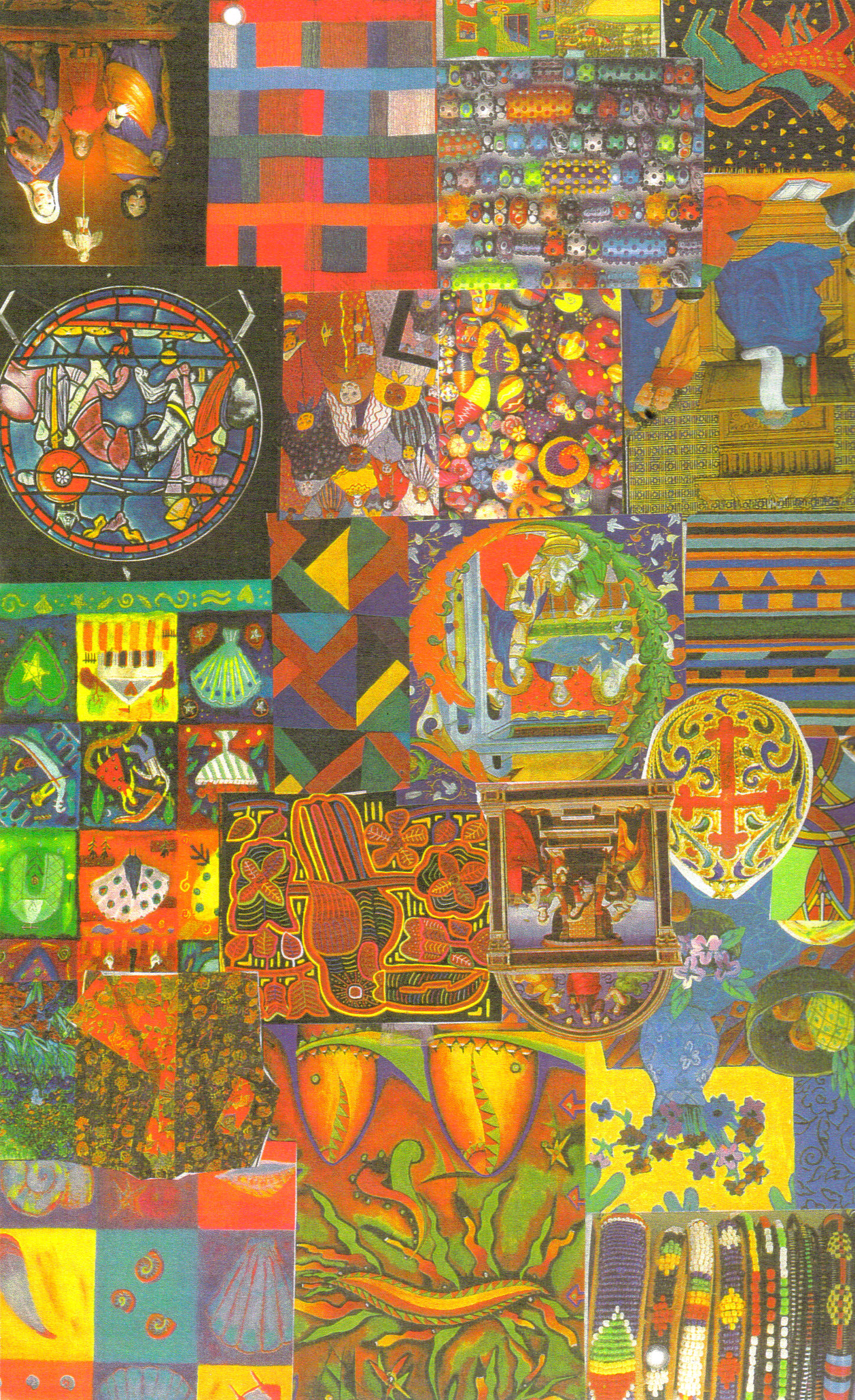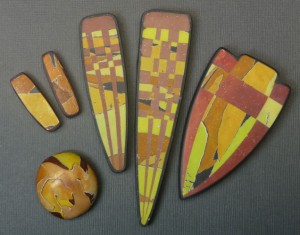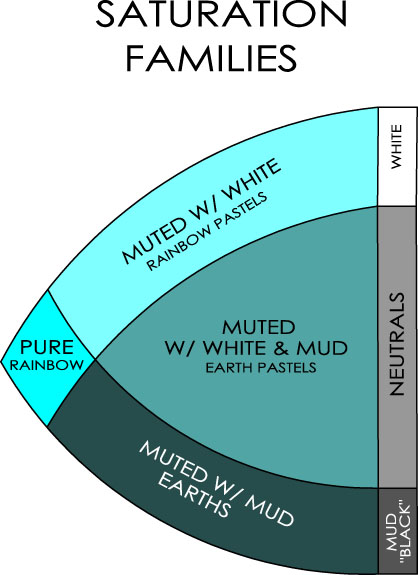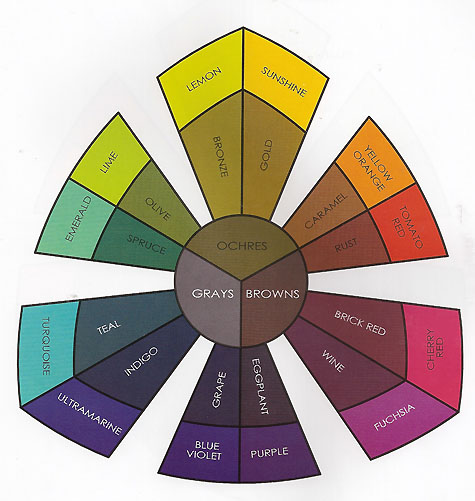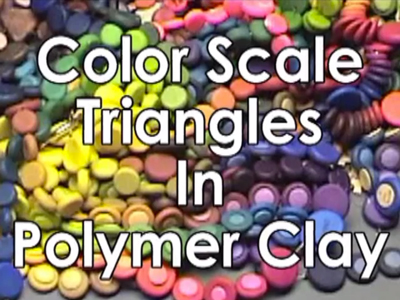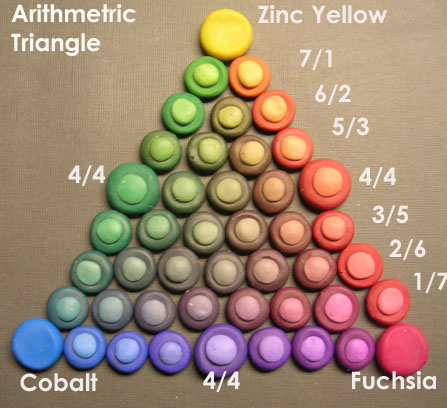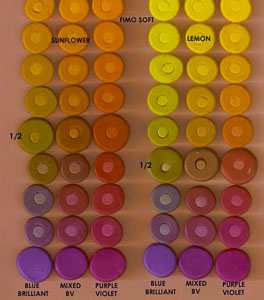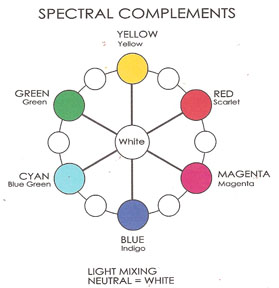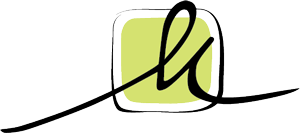Here’s my latest draft of a chart based on input from many sources. The standard sheet thicknesses are now only in millimeters, plus I added a column for the size of the sheet (in mm and inches) that you will get from a regular sized block of clay at the THIN, MEDIUM and THICK sizes. […]
Smashing Color
with Maggie Maggio
The idea for the Color Scales came when I was struggling to keep track of all the test mixing I was doing when I first started using polymer clay in the mid ’90’s. I decided there had to be a better way to organize all the little bits of clay and tried all kinds of systems before […]
I’ve seen some wonderful images posted online by artists who have already made the Pinched Petal Necklace project in Chapter 4. Here’s a gorgeous one from Nora Pero’s flickr site. I especially love the tomato red centers! I would like to post a sampling of Pinched Petal necklace photos on Saturday for the Weekend Extra. If you have […]
When you are instinctive mixing it helps to imagine the direction that you want to move the color. Once you know the direction, you can find the path. The “path” is the imaginary line that runs between the color you have and the color that you want. If you extend this line across the color sorter, any color along that line can be used to move the color to where […]
This is the first of two Studio Tool exercises in the book. We originally had more of them, including a fan deck of Skinner blends, but due to space limitations we had to cut them out. I will try to add instructions for the missing tools at the point in the book where we wanted them to […]
I began making color collages when I moved into my first out-of-the-house studio in 1996. I finally had lots of wall space and decided to pull out the basket with postcards, greeting cards, clippings, art catalogs, and memorabilia that I had saved over the years and get them up on the wall. At first they went up willy-nilly, but when […]
I am having trouble with my camera but here’s a quick and dirty tutorial on using the watercolor technique to make “torn paper” beads similar to the bead on the lower left. 1. Mix a palette. I always start a project by mixing a set of colors that “hang together.” Make at least one color in each hue […]
The concept of saturation is a tough one. The terms tinting and shading usually have to do with changing the value of a color but they also have to do with changing the saturation. Tinting is mixing a color with white, shading is mixing a color with black (or mud, or the complement.) The term “tone” […]
A New Color Diagram After playing with many versions of triangular and circular color diagrams, I decided to design a hybrid Color Sorter specifically for the book. I called the primaries Yellow, Blue and Magenta and divided them each into two variations. I have argued […]
Joey and I spent some time tonight posting the third video, Smashing Color Triangles. Then I remembered I need to give you the links for the handouts. Here they are: Color Scales Handout Instinctive Mixing Handout Color Scales Triangle Worksheet The video ends with a suggestion to use the triangle to practice mixing colors instinctively […]
Over the years I’ve tried many different ways to mix the colors in the middle of a three primary triangle. Nothing seemed to work until I came up with what I call “Base Mixing.” Base Mixing is a two part process that starts with mixing a series of purple colors along the bottom of the […]
I’ve been busy working on the planning for the National Polymer Clay Guild Conference next February. The Request for Proposals deadline was last Tuesday and we have over 100 proposals to review! In the middle of all this Joey and I did manage to get one of the two videos we are working on ready […]
The best way to show the full gamut or range of colors that can be mixed from three primaries is with a triangle and, just like the color scales, there are two variations of color triangles; arithmetric and geometric. Mathematical vs Visual Balance Arithmetric Triangles put the 1/2:1/2 mixes (in the sample they are labeled 4/4) in the middle position […]
Color scales are step-by-step mixes showing the range of colors that you get by mixing two colors in different proportions. You can use any two colors to make scales. The first one I did was black to white, then I tried red to yellow, yellow to blue and blue back to yellow to get the […]
Complementary colors are shown opposite each other on most color wheels, but what is often missing is the neutral color in the center. There are at least four variations of complementary color wheels, each with a different neutral color in the center. Wheel #1: Spectral Complements Spectral complements mix to make white light. The value […]
© 2025 Smashing Color
